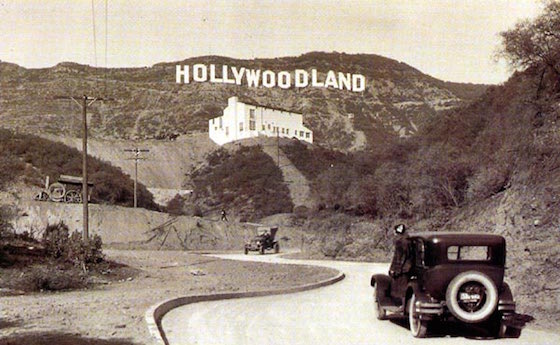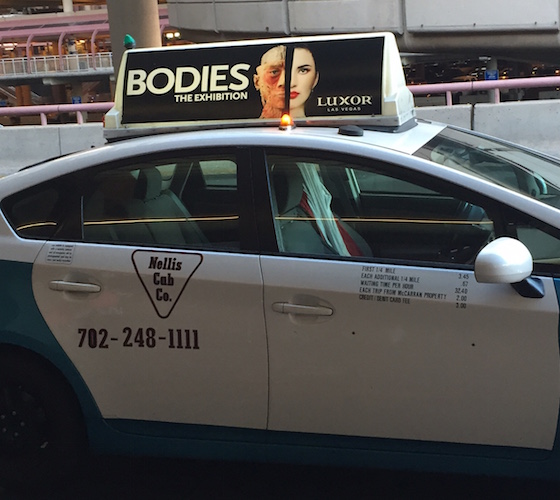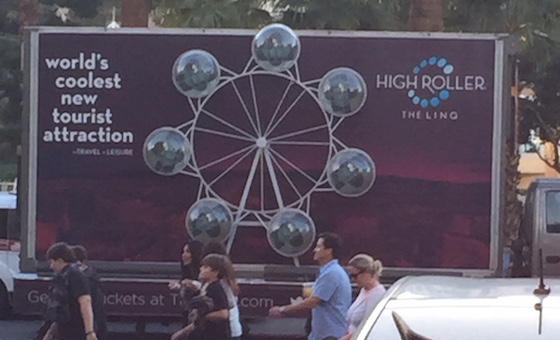Memo From Frank
I recently noticed another abandoned billboard that was brought back into service. This is one of the greatest money-making opportunities out there – to take an abandoned billboard structure and bring it back to life. Everywhere I drive, I see both wooden and metal billboards that are falling into rack and ruin. In some cases, the billboard company has abandoned the billboard because of the inability to strike a renewal deal with the landowner when the lease came out. Others are abandoned because there is blockage to the advertisement. Another subset are cases where the billboard owner got sick or died, or simply moved away. When you see these opportunities, you should contact the landowner and get the full story and see if you have the ability to resurrect it. When you do so, in many cases, all you are risking is the price to print and install the vinyl, as the structure is already there and the landowner, in many cases, is the owner by default. So don’t just drive by these old signs and ignore them. Properly thought out and enacted, these deals offer some of the highest returns in the billboard business.
A Beautiful Money Making Machine

Some people admire the beauty of exotic automobiles. They stare at pictures of Ferraris and Lamborghinis. I prefer the beauty of things that actually make money, which allows you to buy other beautiful things. And one of my favorite money-making objects is the simple wooden billboard sign.
A simple, streamlined package
There is no complexity to a wooden billboard. It is simply vertical poles, horizontal stringers, and plywood faces, then wrapped in vinyl. It is a marvel of a design without any waste. Who would have imagined that you could take a bunch of random items from a lumberyard and make it into an income producing property. Can you improve on the design? Apparently not, as it has been the same for over 100 years. The only change – and improvement – was the invention of vinyl printing of billboard ads about 20 years ago. Prior to that, all ads had to be painted by hand, a very costly and difficult process.
Inexpensive to build
You can build the typical wooden billboard for around $2,000 to $4,000, which includes parts and labor – compare that to a Ferrari. Although steel prices have skyrocketed in recent years, the cost of wooden telephone poles, 2” x4”s and plywood has remained very low by comparison. While a steel 14’x48’ billboard can easily run $75,000 to build, you can build an entire portfolio of 40 wooden signs for that same price. This means that the barrier to entry in the wooden billboard niche is low and egalitarian – most anyone can afford to build a wooden sign if they know what they’re doing.
Phenomenal economic performance
In most real estate niches, the rate of return is around 5% to 10%. Anything over that is considered spectacular. So what adverb can you use to describe the performance of a wooden billboard, which can easily exceed 100% in some markets and circumstances? Anything that you can build for $3,000 and then makes $3,000 per year in return is a worthy endeavor, and a wonder of efficiency. On top of that, you traditionally only rent the advertising space on the sign once per year, so if you look at the total return – including the amount of time you invested in the project – the returns are phenomenal.
Conclusion
The wooden billboard is worthy of admiration. It is a design marvel that is a wonder of efficiency and highly effective in making huge returns on investment.
The Story Of The “Hollywood” Billboard

There are around 500,000 billboards in the U.S., but the best known one in the world resides in Los Angeles, California. The “Hollywood” sign began life as a billboard for “Hollywoodland” and became an American icon, which is known the world over. However, it’s history is pretty fascinating, and most people don’t know the real story.
Giant even by 1923 standards
The sign was first erected in 1923 and originally read "HOLLYWOODLAND". Its purpose was to advertise the name of a new housing development in the hills above the Hollywood district of Chinatown. Real estate developers Woodruff and Shoults called their development "Hollywoodland" and advertised it as a "superb environment without excessive cost on the Hollywood side of the hills". They contracted with the Crescent Sign Company to erect thirteen letters on the hillside, each facing south. Each letter of the sign was 30 feet wide and 50 feet high, and the whole sign was studded with some 4,000 light bulbs. The sign would flash in segments; "HOLLY," "WOOD," “LAND" would light up individually, before lighting up entirely. Below the Hollywoodland sign was a searchlight to attract more attention. The poles that supported the sign were hauled to the site by mules, due to the extreme topography. Cost of the project was around $21,000 in 1923 (about $300,000 in 2015 dollars). It was intended only to last a year and a half, but after the rise of the American cinema in Los Angeles during the Golden Age of Hollywood, the sign became an internationally recognized symbol, and was left there.
Preserved like no other sign in the world
Who would imagine that a $300,000 sign would garner millions of dollars in restoration and security measures? The Hollywood sign today is visible from any computer, as it has live streaming video 24/7. It is closely protected as an American treasure, and proactively maintained by an army of preservationists. A piece of the original sign was found by a local artist, having been saved for a half-century, and sold at auction for over $200,000. It is the Fort Knox of billboards.
A piece of the American culture
Can any American – or foreigner – not be familiar with the Hollywood sign? It’s featured in more movies and television shows than any other sign in history. A study found that the Hollywood sign is one of the most recognizable items in the world. The very sight of the sign brings excitement to millions of tourists each year.
And it’s seen a lot of history, too
And the sign has seen a lot of history, as well. The entire growth of Los Angeles has occurred pretty much since the sign was built. The growth of the motion picture industry happened while the sign was on watch. And then there’s the death of Peg Entwistle in 1932, an aspiring actress who jumped to her death from the sign after being passed over at an audition (the strange ending is that she had actually garnered the part, but had missed the phone call, and instead received a letter in the mail announcing that she got the part later on the day she died. That letter was still in her post office box when they went through her estate).
Conclusion
The Hollywood sign is an iconic piece of outdoor advertising and one of the most valuable billboards in the world. And now you know the whole story.
The Out-Of-Home Advertising Industry: The Father Of Billboards


Many people think that billboards stand alone as a division of the advertising market. But the truth is that billboards are only one piece of a bigger universe that is called “Out-of-home” advertising. And if you think big, you may find even more opportunities in this industry.
A giant niche
“Out-of-home” includes 1) billboards 2) street furniture 3) transit and 4) alternative. How big is the “out-of-home” advertising niche? While billboards are the largest division, they account for only 66% of total revenue in the out-of-home industry, with billboard revenue in the U.S. at around $10 billion. So we’re talking about nearly a $20 billion business here. Every ad you see when you leave your house is represented in this number, from ads on taxicabs to billboards to bus benches. It’s a really big field.
Identical business model that can be easily replicated
All of the out-of-home segments follow nearly identical business models. The media owner rents or builds the objects to display ads on (signs, walls, benches, vehicles, etc.) and secures a long time lease with the property owner. They then rent the ad space and keep the difference between the rents and the payments to the landowner, as well as costs of production. Once you have mastered the business model, you can move freely between the styles of out-of-home with little difficulty. It’s like riding a bicycle – once you know how to do it, you can ride any style of bike.
Still room for new concepts
Note that one of the four segments of the “out-of-home” business is called “alternative”. That’s because there are always new ideas that are being introduced to reach the American masses. Think of all the ads you’ve seen recently – from malls to urinals – and you can imagine that there are many ideas still to be dreamed up. For example, I recently went to the airport, and found there are now ads inside the airport parking shuttles, both static and on monitors. Where can you think of to place an ad to reach the general public? You may just have the next blockbuster.
Fantastic “scale” potential
One great thing about the “out-of-home” market is that it’s so massive. There are roughly 300,000,000 people in the U.S. If you can develop a winning prototype, you can expand that to all 50 states and thousands of cities and towns. That’s how some of the greatest fortunes in the U.S. began, with a simple idea that was rolled out to a million locations. John Kluge, the first out-of-home billionaire, understood that well when he brought out billboards, radio and television in the 1960s – the whole goal was to take a winning formula and then place it around out giant country. McDonalds has done the same thing with fast food and Walmart perfected it for shopping. The key is to thing small with your prototype, and then think big with the roll out.
Little downside
One great attribute of the “out-of-home” business is that it is relatively low in risk. Most out of home takes advantage of existing venues to reach people, without having to build their own content. For example, if you place ads at the gates to a football stadium, it’s the football that draws the crowds and costs millions of dollars – none of which you have to pay. However, if you own a television station, you have to create the programs that draw people to watch the ads, and that costs millions of dollars and a huge amount of risk.
Conclusion
If you are going into the billboard business, or are already in the billboard business, that’s great. But don’t limit your horizons. You may also find opportunity in the mobile outdoor business, or some other niche of the overall segment of out-of-home. Keep your eyes open for opportunity. There’s nothing that says you cannot have more than one out-of-home endeavor!
New Billboards For Sale On OutdoorBillboard.com
The Market Report
Prices Are Delayed By At Least 15 Minutes